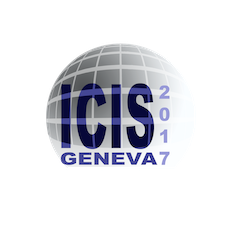Speaker
Description
Particle-in-cell (PIC) codes are used since the early 1960s for calculating self-consistently the motion of charged particles in plasmas, taking into account external electric and magnetic fields as well as the fields created by the particles itself. One main feature of PIC codes is that they resolve the Debye length, i.e. they can calculate the transition between the quasi-neutral plasma and a wall (the plasma sheath) or – in the case of extraction of charged particles – the transition between the plasma and one or more extracted beamlets (the extraction surface).
Due to the used very small time steps (in the order of the inverse plasma frequency) and mesh size the computational requirements can be very high and they drastically increase with increasing plasma density and size of the calculation domain. Thus, usually small computational domains and/or reduced dimensionality are used. In the last years the available CPU power strongly increased. Together with a massive parallelization of the codes it is now possible to describe in 3D the extraction of charged particles from a plasma, using calculation domains with an edge length of several centimetres, consisting of one extraction aperture, the plasma in direct vicinity of the aperture and a part of the extraction system.
Large negative hydrogen or deuterium ion sources are essential parts of the neutral beam injection (NBI) system in future fusion devices like ITER and the demonstration reactor DEMO. For ITER NBI RF driven sources with a source area of 1.9 × 0.9 m$^2$ (1280 extraction apertures) will be used. Extraction of negative ions is accompanied by co-extraction of electrons which are deflected onto an electron dump. Typically, the maximum negative extracted ion current is limited by the amount and the temporal instability of the co-extracted electrons, especially for operation in deuterium.
Although the general effectivity of measures decreasing and stabilizing the co-extracted electron current (for example the magnetic filter field, B$_{\mathrm{max}}$ ≈ several mT) can be easily demonstrated in the experiment, a thorough optimization (for example finding the optimum filter field topology) can be done only by applying models. Different PIC codes are available for the extraction region of these large RF driven negative ion sources. Additionally, some effort is ongoing in developing codes that describe in a simplified manner (coarser mesh or reduced dimensionality) the plasma of the whole ion source.
The presentation first gives a brief overview of the current status of the ion source development for ITER NBI. Different PIC codes for the extraction region are introduced as well as the coupling to codes describing the whole source (PIC codes or fluid codes). Presented and discussed are measures used in the experiment for reducing the co-extracted electrons as well as recent results of the 3D PIC code ONIX (calculation domain: one extraction aperture and its vicinity) for the ITER prototype source (1/8 size of the ITER NBI source) and the ELISE source (0.9 × 1 m$^2$, equal to the same width but only half the height of the ITER source). Finally, an outlook to the future of both the experiments and the code development is given.
